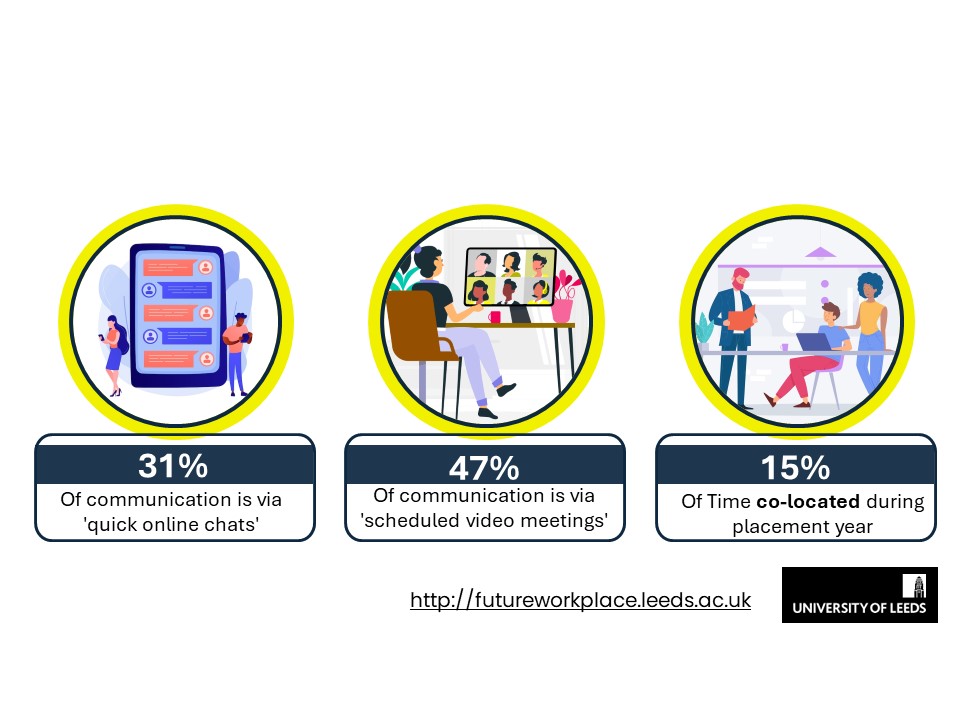With many early career hires lacking work readiness, Daniel Yuki Smith at Interaction explains the best development strategies for hybrid working.
Another great ISE Student Development Conference! So many thought-provoking sessions covering topics such as how GenZ and AI are changing the learning landscape.
We kicked off the day with Georgia Greer, Head of Insights at ISE, sharing the headline findings from this year’s ISE Student Development Survey.
Lack of business readiness
The hot topic of the day was ‘business readiness’ or the apparent lack thereof!
According to ISE’s survey, half of employers surveyed said that their graduates are not career ready at the point of hire (and a similarly high number for school and college leavers).
Discussion turned to what this means beyond the basic skills required like verbal and written communication.
We know that this is not just about knowing how to write an email or hold a conversation; it’s about mastering the nuances of modern workplace expectations and organisational culture. Things like dress-code, online-meeting etiquette and working hours are catching out today’s new starters.
So, anecdotal evidence and ISE data suggests that early career hires are starting out without all the skills that they need to navigate today’s hybrid workplace successfully.
This shouldn’t be a problem if we can up-skill them rapidly, right? Are we able to do that effectively?
Enter our breakout session, ‘Ready, Set, Grow’ which was all about empowering early-career professionals to hit the ground running.
Communication is key

It’s hard enough for established staff to know how to communicate effectively in a hybrid world so the challenge is only heightened for early career hires joining organisations today.
While Teams chat is quick and convenient, how much can we discuss in chat before it becomes overwhelming and key information gets lost in the noise?
What should go in an e-mail? Just the official stuff? TL;DR!
Sometimes it’s better to simply talk about these things. But with hybrid working, you can’t just swing by someone’s desk and assume they will be there. Managers aren’t in the office a lot of the time. And it feels overkill to schedule a call with a line manager to ask something simple.
The reality is it’s getting harder for early career hires to ask the ‘silly’ questions that help to establish normal workplace expectations and the culture of an organisation. It can also stifle challenges to the status quo, which is, after all, part of the reason for recruiting early career hires in the first place – to drive innovation.
Let’s not let hybrid working stand in the way of change
Let’s break down the barriers between the next generation of workers and their managers and teams.
The key ingredient is creating a psychologically safe environment that encourages young people and their managers to open up and share their expectations of each other and speak the same language.
How to work with early careers professionals to enable them to thrive
According to the ISE survey, online training is still the dominant method of delivery (nearly everyone does it). So, with only 9% of respondents viewing online learning as impactful, we need more examples of great ‘ticktockification of learning’ to reach a wider audience.
However, we know it’s important that in a world where attention spans are shrinking, we need to get creative with offering a blend of learning methods so early career hires can make choices that fit their learning style – making learning more impactful.
This is where classroom and experiential learning comes out on top when respondents were asked what methods of learning were most impactful.
By sharing live experiences together with peers that explore how to and how not to behave at work, it can help to capture all of these explicit and unspoken rules.
Giving space to explore topics safely increases the impact of learning and helps shift ownership onto learners. They create their own ‘cultural compass’ that clearly sets out what’s expected. Committing to a collective agreement like this is a great way to keep early career hires accountable for their behaviour as they go through their onboarding and beyond.
L&D professionals need to be on the front foot and be proactive. Plan ahead to implement the kind of training and development programmes that take into account the changing landscape of hybrid working and skills deficit. And let’s do it now, before this becomes a crisis of retention.
You may also be interested in…
Graduates prefer hybrid work but feel ‘return to office’ pressure
To be a good GenZ manager we need to appreciate their vibe


0 Comments